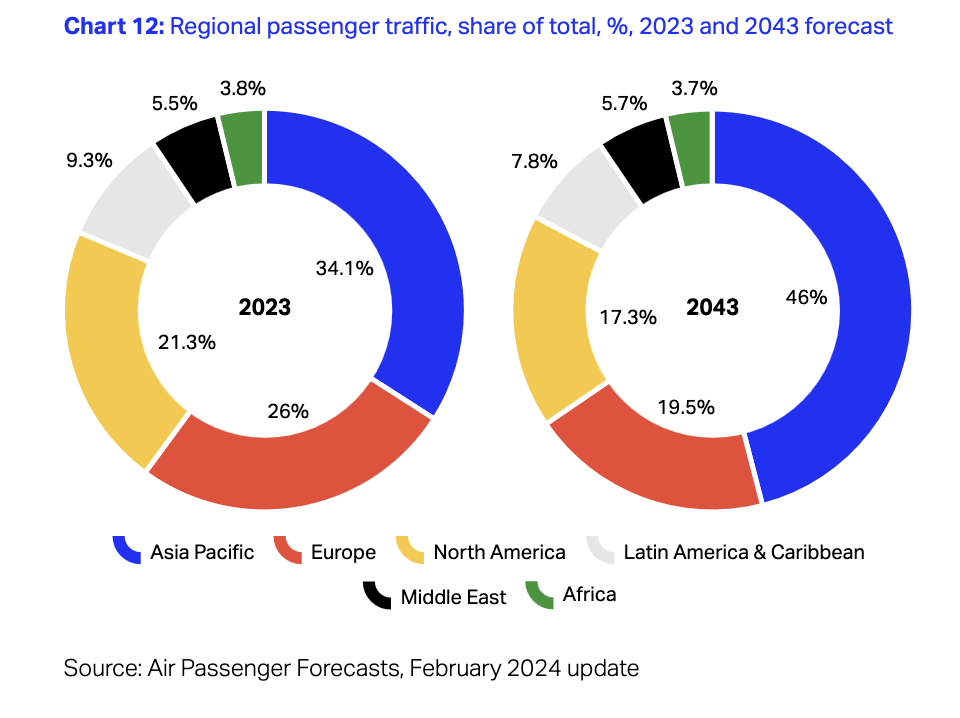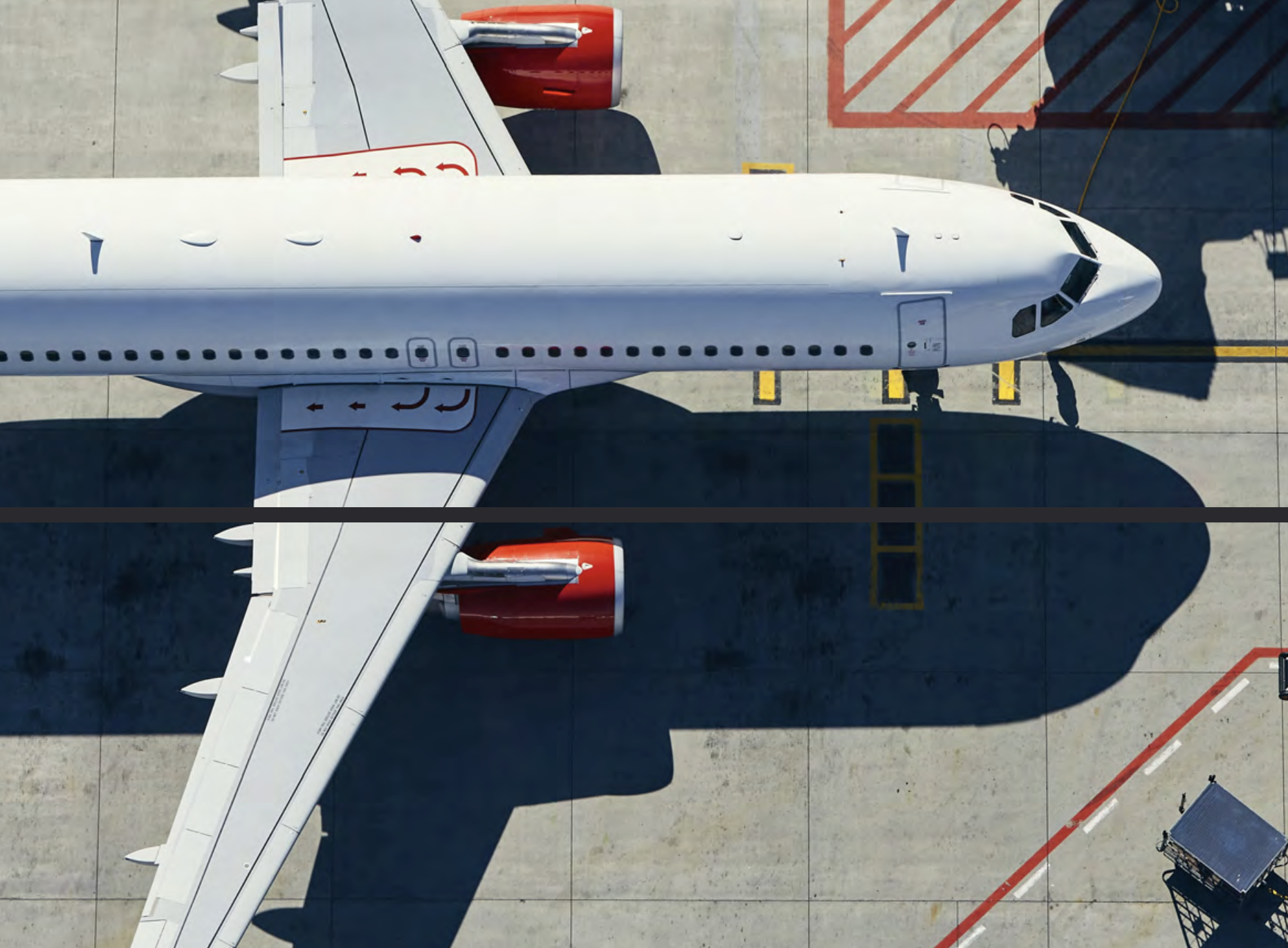Airlines expect to carry almost five billion passengers worldwide this year, a new record, according to figures from the International Air Transport Association (IATA). This would smash the record set in 2019 before the coronavirus crisis.
Airlines also expect to fly 30.5 billion dollars in profits this year, on revenues of 996 billion dollars. Previous forecasts still had 25.7 billion dollars in profit expectations.
Growth strongest in Asia Pacific
IATA so far foresaw 4.7 billion air passengers for 2024 but has now revised that outlook upwards to 4.96 billion, which means profits will also rise from 25.7 billion dollars to that 30.5 billion dollars.
Most of those new passengers will come from Asia Pacific, with China and India driving developments in this region and contributing to more than half of the global net gain in passenger numbers by 2043.
According to aviation economist Wouter Dewulf (Antwerpen) in the newspaper Het Nieuwsblad, Asia has a 5% annual growth rate, while in Western countries, it is 2% a year.

IATA estimates that air transport revenue will also break records this year at 997 billion dollars. So far, it has mentioned 964 billion dollars for 2024, well above the 838 billion euros for 2019.
Air cargo sales, which exploded to 210 billion dollars in 2021, will fall to 120 billion dollars this year, though, after 138 billion dollars in 2023. But it will still be more than 101 billion dollars in 2019, before the crisis that disrupted the logistics chain, IATA predicts.
A turning point is a global increase in steps taken by countries to restrict international trade by different measures, including raising tariffs.
Limited profit margin
Despite those pleasing record figures after the huge losses into which the pandemic had plunged the airline industry, IATA says the profit margin remains limited, with a net margin of 3% in 2024, or 6.14 dollars per passenger.
Moreover, aviation costs are also expected to break records this year at 936 billion euros. The main cause is high fuel prices, which account for 291 billion dollars, or 31% of operating costs, based on a 113.8-dollar barrel of paraffin.
Slow growth SAFS, higher CO2 emissions
To achieve zero net emissions of CO2 by 2050, IATA is committing 65% to fuels of non-fossil origin or sustainable aviation fuels (SAFs). Furthermore, it hopes to deploy new technologies, including hydrogen aircraft, ground and air operations optimization, and carbon offsets.
But SAF, despite an expected tripling of production this year compared to 2023, will still account for only 0.53% of total global fuel consumption for commercial air transport in 2024, according to IATA.
Remarkable in this regard, however, is that IATA openly states that “weaning the global economy off its dependence on fossil fuels must be everybody’s most overarching priority.”
With good reason. After all, aviation accounts for 3% of CO2 emissions, but its share is rising, unlike that of heating and transport, for example.




Comments
Ready to join the conversation?
You must be an active subscriber to leave a comment.
Subscribe Today